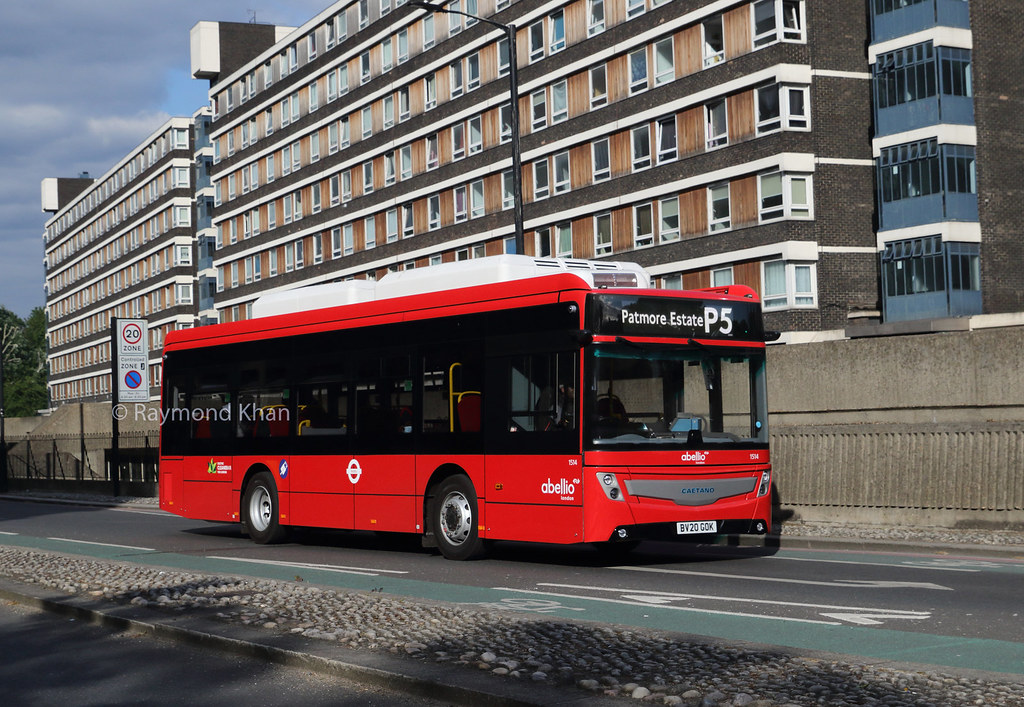Dear all,
I have recently become an enthusiast of buses in the UK, both modern and vintage. Unfortunately, I have experienced difficulty in finding a suitable venue to pose various questions I have about buses. All I could find were forums for specific enthusiast groups, which tend to be very regional in their remit. And so, if anyone has any information about places I could go to ask these questions, could you please post it here?
Also, I will post my questions here anyway, some of which are quite obscure, so that you can provide any insights to them that you might have. The questions are as follows:
I have recently become an enthusiast of buses in the UK, both modern and vintage. Unfortunately, I have experienced difficulty in finding a suitable venue to pose various questions I have about buses. All I could find were forums for specific enthusiast groups, which tend to be very regional in their remit. And so, if anyone has any information about places I could go to ask these questions, could you please post it here?
Also, I will post my questions here anyway, some of which are quite obscure, so that you can provide any insights to them that you might have. The questions are as follows:
- After looking at historical bus companies in the north of England, I have noticed a lack of Scottish border crossings in their routes. This surprises me, as I would expect a company that operates somewhere like Carlisle or Berwick-upon-Tweed to have routes that cross the border to provide much needed bus connections to places such as Gretna and Eyemouth. I have looked at lots of photographs of old buses in these areas and couldn’t seem to find any with Scottish place names in their destination displays. And so, I must ask, where are the buses that make the border crossings? And why can’t I find any photos of Ribble Motor Services vehicles north of Carlisle? Also, where are the Manchester to Glasgow buses?
- Why are Transport for London so resistant to using LED destination displays on their buses? Isn’t that the cheap industry standard now? Who on earth is still making the old roller blinds? Couldn’t they at least try out the LED displays on a review basis?
- Why on earth were buses so “regional” in the 1960s? What I mean by that is, why were there bus bodies that rarely or never appeared in one area but are extremely common in another? I know of several examples of this phenomenon, especially in London. For some reason London once had, and occasionally still has buses, such as Routemasters and Regal IV Buses, that have never shown up anywhere north of Watford. Also, I notice that Eastern Coach Works bodied and Bristol chassis single-deck buses were as rare as hens’ teeth in Scotland, but were all over the place in such places as Exeter, Plymouth, Swansea and even places as far north as Cumbria, Lancashire and Northumberland. What on Earth is going on here?
- Why did we lose so many chassis and body builders? Whatever happen to such names as, AEC, Park Royal, Guy, East Lancs, Eastern Coach Works, Daimler, Leyland, Bristol, Harrington, Northern Counties, Weymann, Metro-Camell, and many others?
- Why are old photos of buses from the 1960s-1980s always under copyright. Shouldn’t some of these have expired by now? Also, why are the photographers so greedy in the first place? Since I can view the photos for free on the internet, and since I can also download them and print screen them very easily, what could the photographers possibly gain from not declaring them to be public domain? Wouldn’t Creative Commons make more sense in this context?
- Final question, and it’s about models of buses. Why are they so hard to come by? Shouldn’t they be mass-produced in the thousands? Also, why do people always fail to use the metric system when listing the measurements of buses, both actual buses and model buses? I could go on all day about model buses, and I will continue for a bit longer. How come no-one in this industry has attempted to market these models to younger enthusiasts? I think these models could hold the same function as toy cars, which often use the same die casting production methods. Another thing, why do they always use numbers such as 1:76 scale? Why can’t these people give the exact dimensions in mm or cm?

